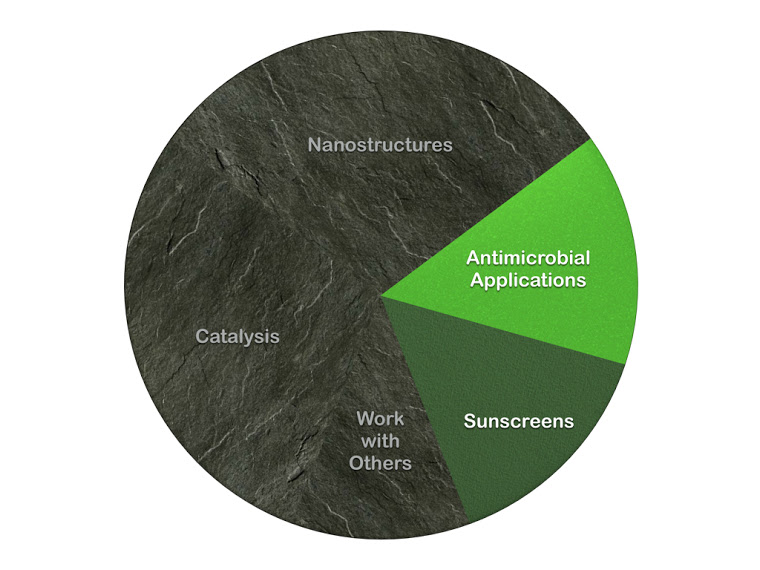Health & Cosmetics
Health and Cosmetics
Among the applications of nanostructures, one that has traditionally interested our group has been in relation to health, in particular antimicrobial properties and applications in the sun protection areas. Antimicrobial work has concentrated on silver nanostructures with different morphologies that are selected to show biocompatibility with excellent antimicrobial properties at low concentrations. In some cases we can employ plasmonic effects to enhance the activity of nanostructures and in this case particles containing gold present light absorption properties suitable for health applications.
In the area of sunscreens we explore the photostability of organic sunscreen ingredients and in the case of Titanium dioxide we develop strategies to prevent adverse effects. Interestingly our experience in catalysis , has helped us develop better potential sunscreen active ingredients.
A key paper from our group in 2012 demonstrated that silver nanoparticles (at the same total concentration) are more effective than silver ions as antibacterial, thus dispelling the traditional idea that nanoparticles are simply suppliers of soluble ions.
E. Alarcon, K. Udekwu, M. Skog, N. L. Pacioni, K. G. Stamplecoskie, M. González-Béjar, N. Polisetti, A. Wickham, A. Richter-Dahlfors, M. Griffith and J. C. Scaiano, “Silver Nanoparticles Revisited: Collagen-stabilized, Photochemically Prepared Silver Nanoparticles for Biomedical Applications” Biomaterials, 33 (19), 4947-4956 (2012)
Several studies followed, including the demonstration that bimetallic particles such as gold with a silver shell can show antibacterial properties that can be enhanced by visible light irradiation of the gold plasmon (usually with green light). Remarkably, there interesting particles can be stabilized with aspartame, a common, inexpensive and non-toxic sweetener.
Aspartame-stabilized gold-silver bimetallic biocompatible nanostructures with plasmonic photothermal properties, antibacterial activity and long-term stability”
JACS, 2014, 136, 17394.
